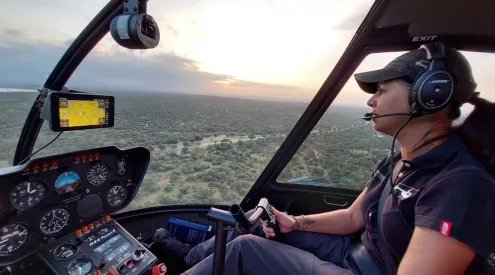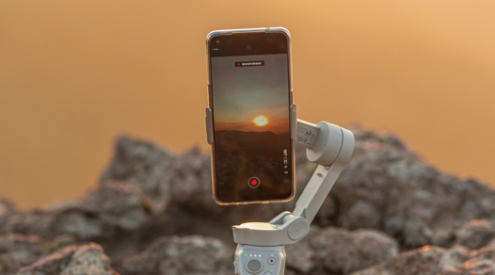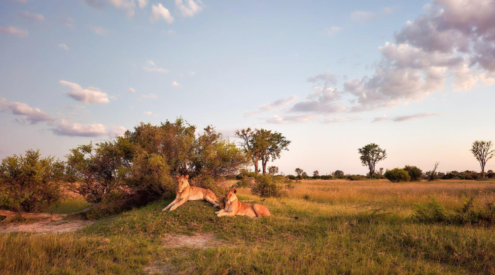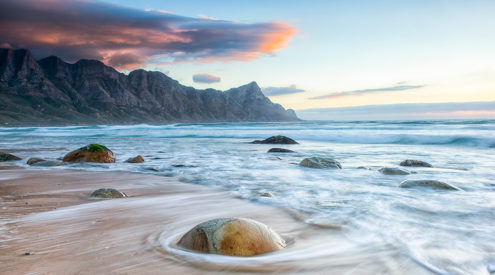Just finding a suitable avian subject is tough. Capturing it doing anything but perching on a branch might be the hardest photographs you’ve ever attempted. Andreas Eiselen tells you how, using this image by wildlife photographer Albert Froneman.

Equipment Canon 1D Mk III, Canon EF 500mm f/4 (with 1.4x extender), ISO 640, f/8, 1/4000 sec. Image: Albert Froneman.
Albert says…
Lanner falcons are plentiful in the Kgalagadi Transfrontier Park during the summer months. I knew they were hunting around the Dalkeith waterhole near Mata-Mata, so I positioned my vehicle with a good view of where most of their flight activity was taking place. There were several youngsters and as soon as one of them or an adult attempted to strike at the doves coming to drink, there was a flurry of activity. The youngsters also engaged in play fighting. For this shot, I was able to pan with them to grab a few frames, and this one turned out really well.
Albert’s tip
Capturing birds in flight is all about speed and knowing your subject. I prefer to hand-hold the camera as it’s easier to follow the fast-moving action.
Take it yourself
Both your reactions and camera need to be functioning at top speed.
Equipment
Use a telephoto lens of at least 300mm or 400mm, or a 200mm with 2x converter. These lenses are heavy and hand-holding may cause camera blur. A bean bag on a solid surface like a car door works well. A tripod is cumbersome and will limit your free movement.
Settings
Your subject will be moving quickly so shutter speed must be above 1/2 000 sec to freeze the motion. The shutter must also be on fast multiple shot (continuous). Open the aperture wide and drop the ISO as low as the shutter speed and available light will allow. Switch auto focus to AI servo (Canon) or AF-C (Nikon), which will constantly refocus when the shutter button is halfway depressed. Select a group of multiple AF (auto focus) points as this will make it easier to keep the subject in focus. This combination of motordrive and continuous focus will produce sharp images, while the high shutter speed cancels motion blur.
Practical
Be patient and prepared. Know the habits of the raptor you are stalking.
Test your settings while you wait to find the correct combination of shutter speed, ISO and aperture so that when the action happens you’re ready.
Shoot a couple of test shots along the flight path you think your raptor may take.
Pan with your subject in flight and keep the bird covered by your focus points.
Shoot in the morning and late afternoon when the light is less harsh.
Starter tip
Line up your subject by looking low over the hot shoe (flash attachment) of the camera and the front top tip of your lens, like with iron sights on a rifle. Once your subject is ‘in the sights’, move quickly to the viewfinder.
Amateur tip
Practise shooting in Manual mode. With changing backgrounds – such as going from sky to trees – auto mode won’t get the exposure correct.
Pro tip
Slow your shutter speed to convey motion in the wings while keeping sharpness in the body and head of the bird.


















